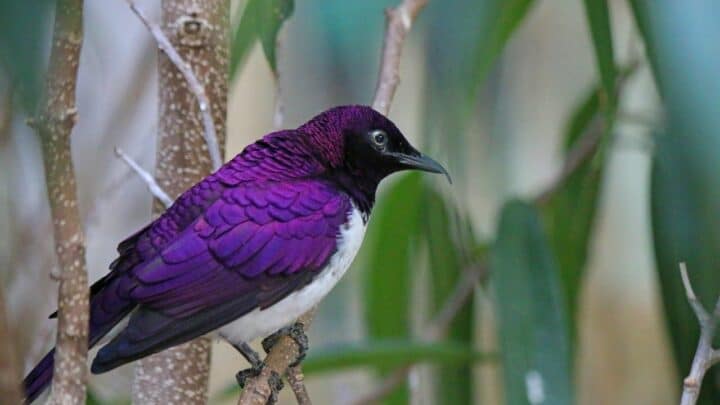While the color purple is considered relatively rare in nature, you may be surprised to learn that there are birds all over the world that boast beautiful royal-colored plumage.
From big to small, ordinary to exotic, and ranging from light lilac to vibrant violet, this article looks at a few prominent purple bird breeds, and specifically at those that sport this color as their most prominent feature.
Purple Bird Breeds
Birds with purple feathers include the Violet-backed Starling, Purple Starling, Purple Martin, Varied Bunting, Purple Honeycreeper, Purple-Breasted Cotinga, and Violet Sabrewing. Birds with notably violet plumage include the Purple Grenadier, Violet-bellied Hummingbird, and Purple-crowned Woodnymph.
Birds that are Purple All Over
While no bird is purple from head to toe, several are almost entirely enrobed in this majestic color.
Some are common in the areas they are found in, while others are rare and exotic.
Violet-backed Starling
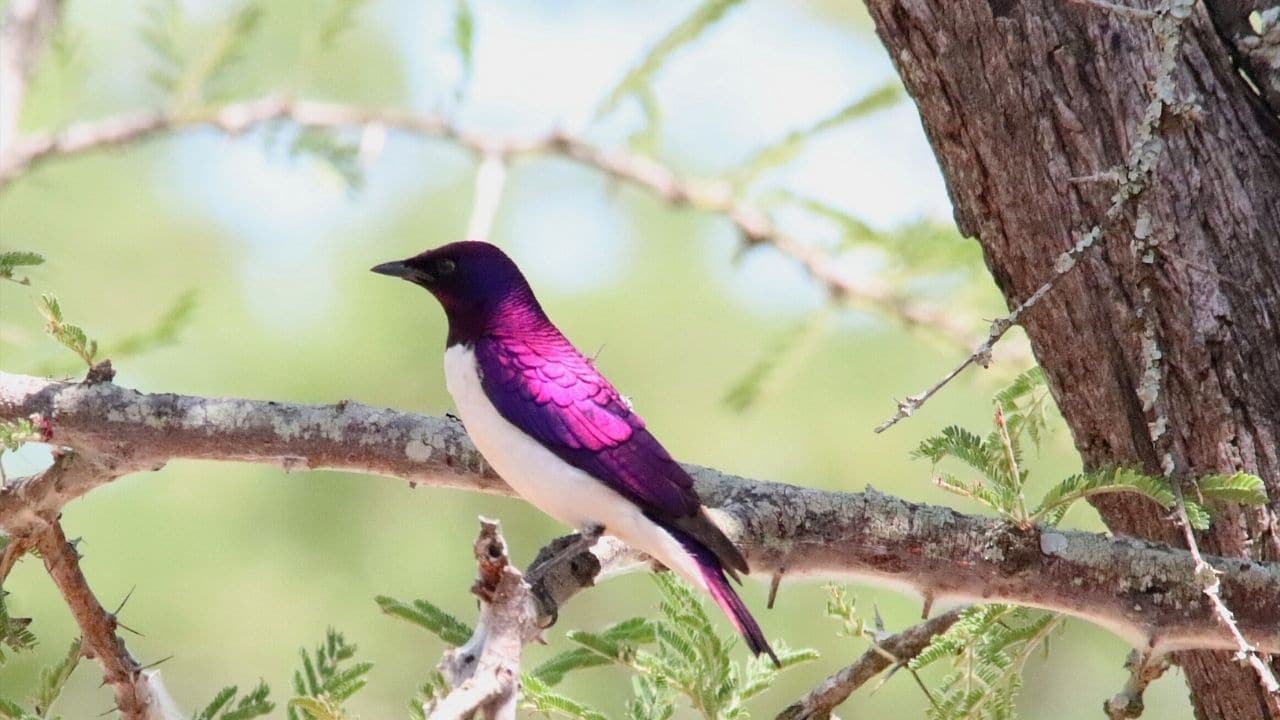
Hailing from South Africa, the Violet-backed Starling is the smallest bird of its genus and is commonly found in forested or wooded areas in sub-Saharan Africa.
Only the male of this species is brilliantly purple, while the female is shades of brown. Barring a white chest, the adult Violet-backed Starling is 6.7 inches (17 centimeters) of pure purple hue.
Purple Starling
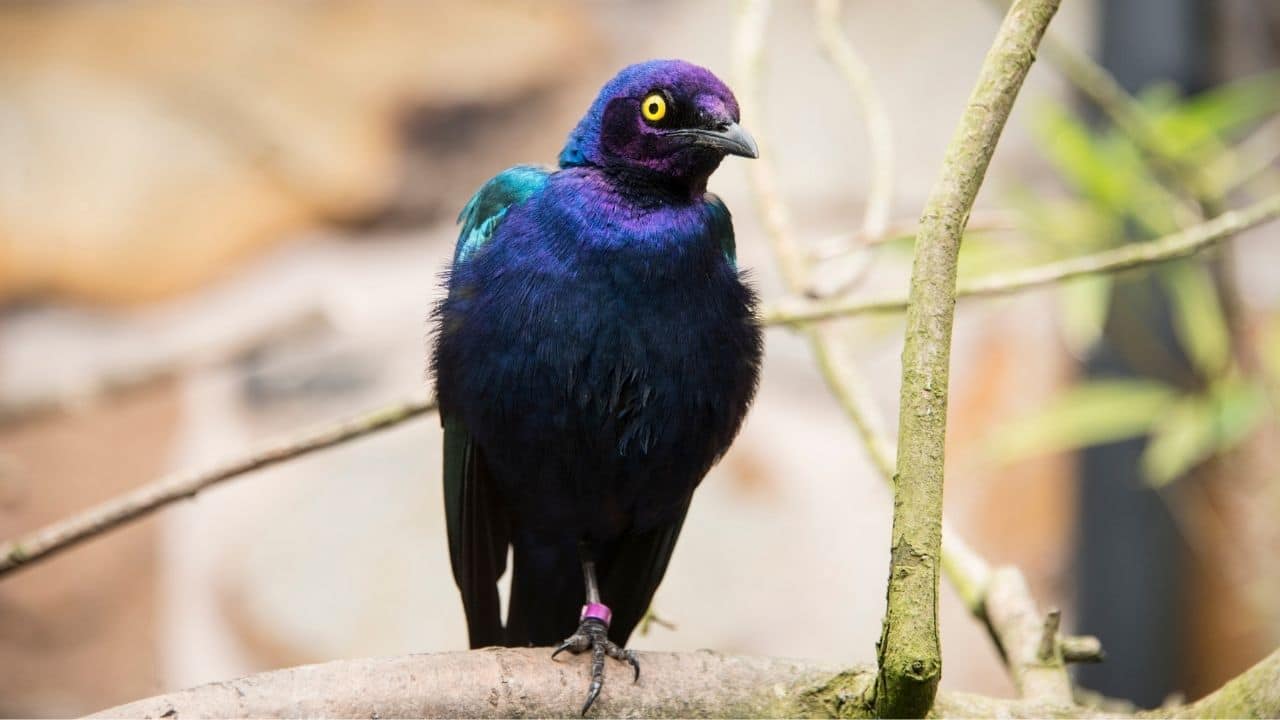
A second fabulously feathered fowl from the Starling family is the aptly named Purple Starling.
This bird can be found in tropical areas of Africa, hanging around in savannas and scrublands. Both males and females have violet bodies and shiny green tints on their wings.
Purple Martin
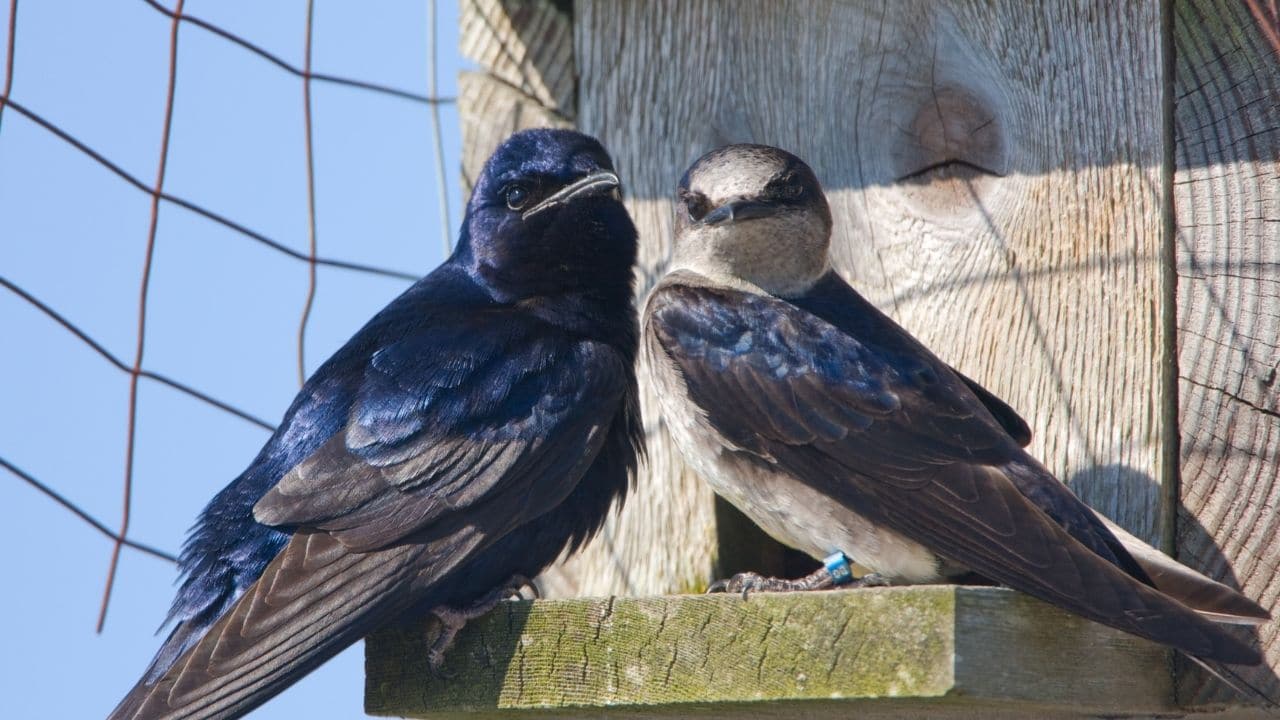
This showy bird is found in temperate parts of North America and is considered the largest known variety of swallow.
While female Purple Martins are subdued in appearance, with grey, white, and steel tones, the males of this species are dark purple all over with black bills, feet, and wingtips.
Varied Bunting
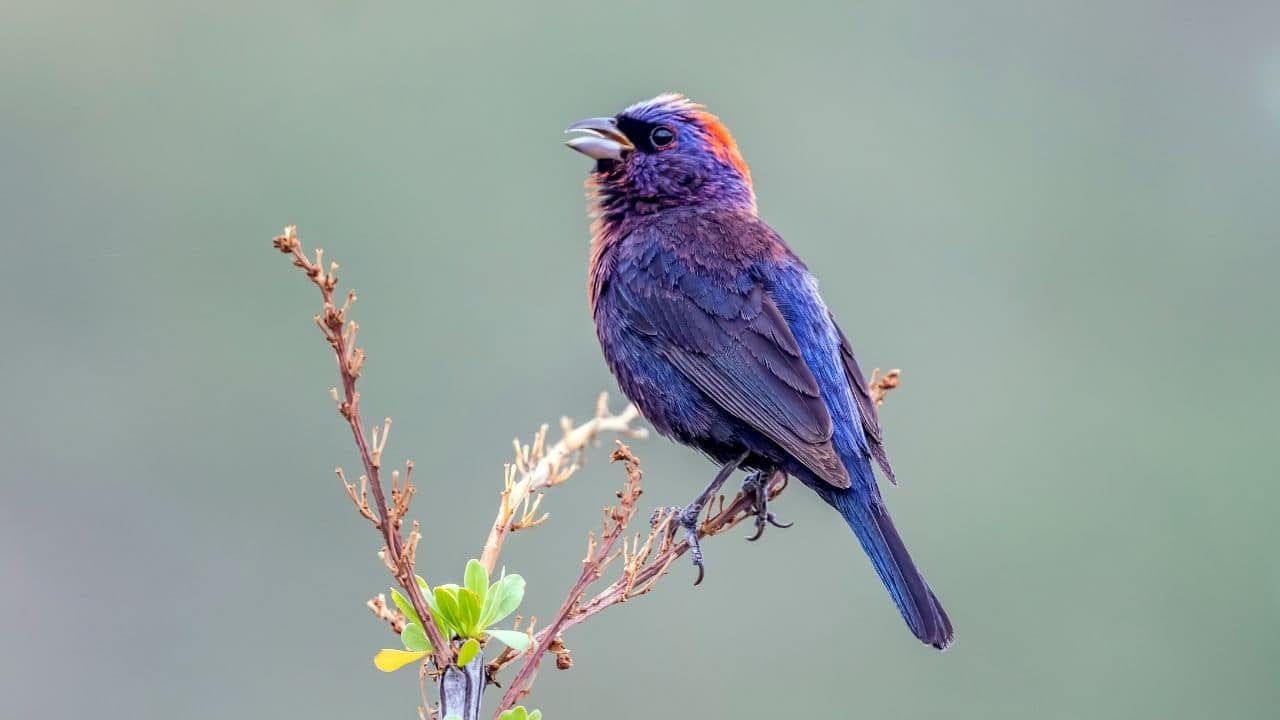
This vibrant songbird is native to Texas, Arizona, New Mexico, and parts of northern Mexico.
A mature male Varied Bunting has a mostly purple body with a distinctive red patch on its head. Females are brownish-grey.
Purple Honeycreeper
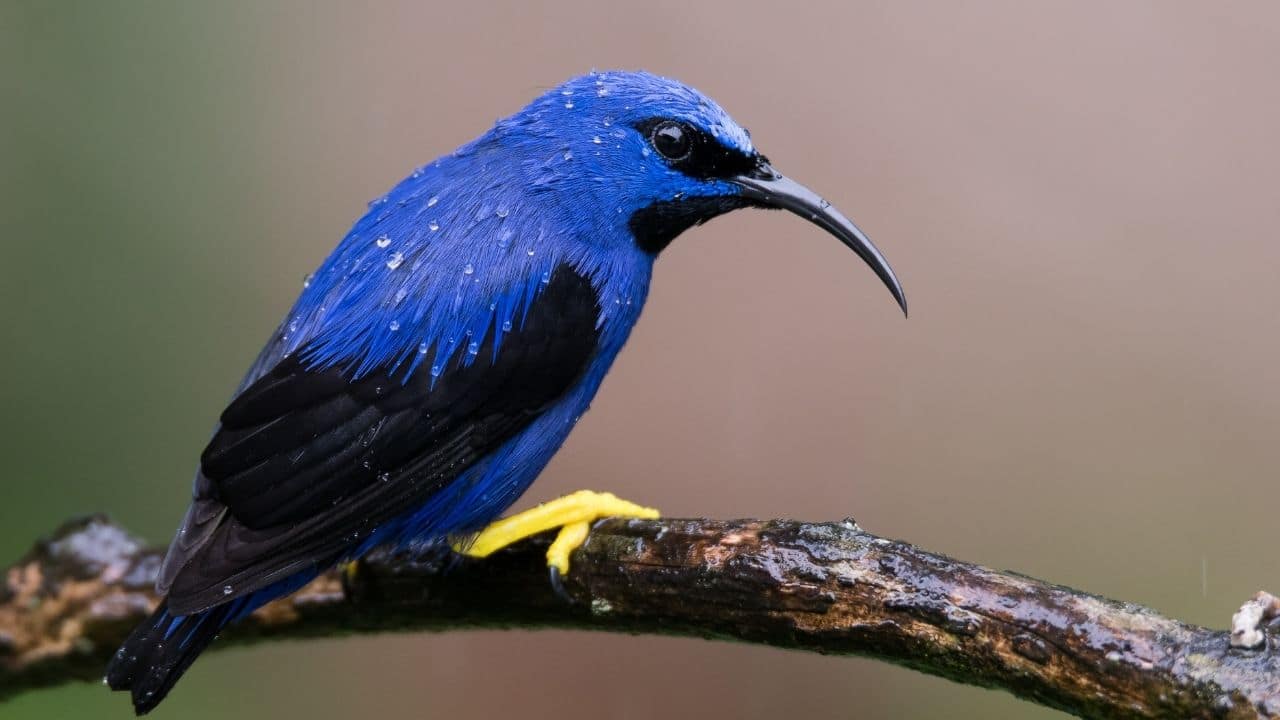
Adorable name aside, the Purple Honeycreeper is famous for its bright hue and equally distinctive sturdy yellow legs.
Found in South America, this tiny bird breed is dimorphic in color, meaning that females are totally different-looking from their violently violet mates.
Adult males are purple-blue with black chins, bellies, and wingtips, whereas females are lime green with yellow undercarriage.
Purple-breasted Cotinga
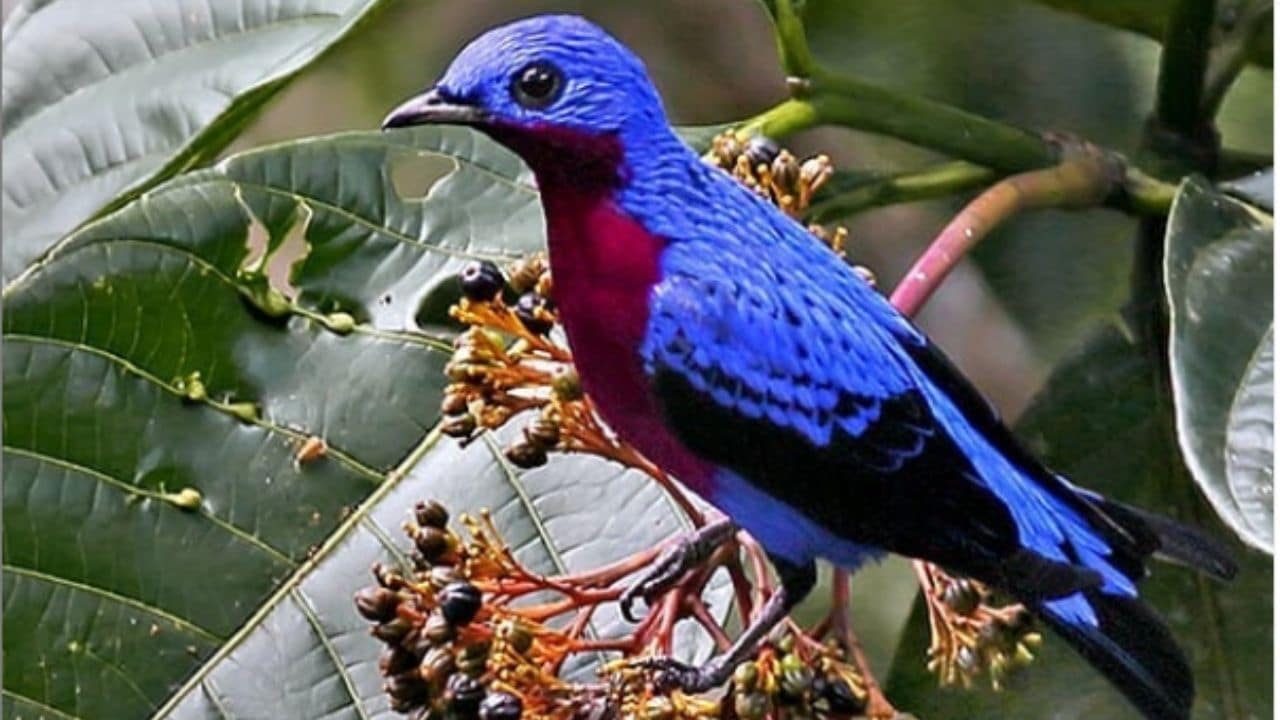
Photo Credit: @edsonendrigo on Instagram!
Another South American native, the Purple-breasted Cotinga enjoys moist, tropical forest areas as its showground.
Indeed, this fascinating species is comprised of two distinct purple shades, with their heads, backs, and bottoms appearing bluer in contrast to their pinker chests.
Violet Sabrewing
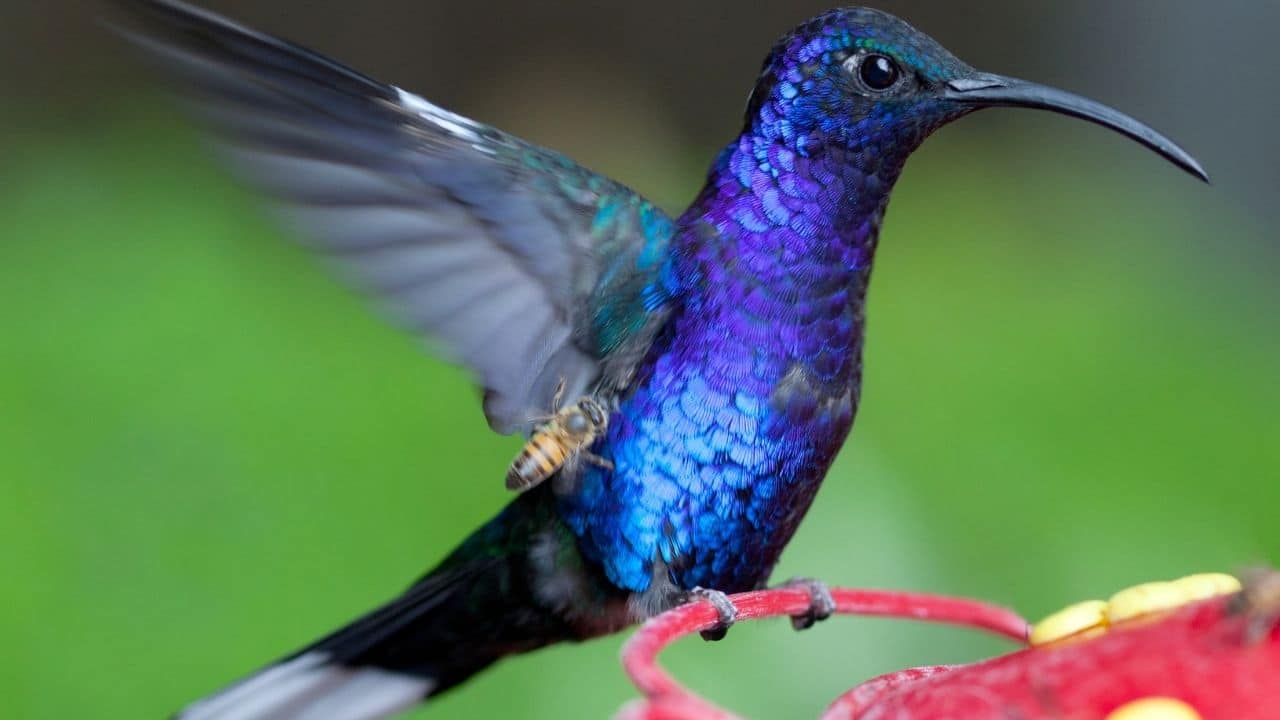
Both male and female Violet Sabrewings have glossy, bright violet plumage with just a touch of green on their wings and backs.
These beauties are a large breed of hummingbird found in most of Central America and some parts of Panama and Mexico.
Purple-tinged Honorable Mentions
While the following species are not fully covered in purple feathers, they still sport distinctive plumage and deserve mention in the purple bird category.
Purple Grenadier
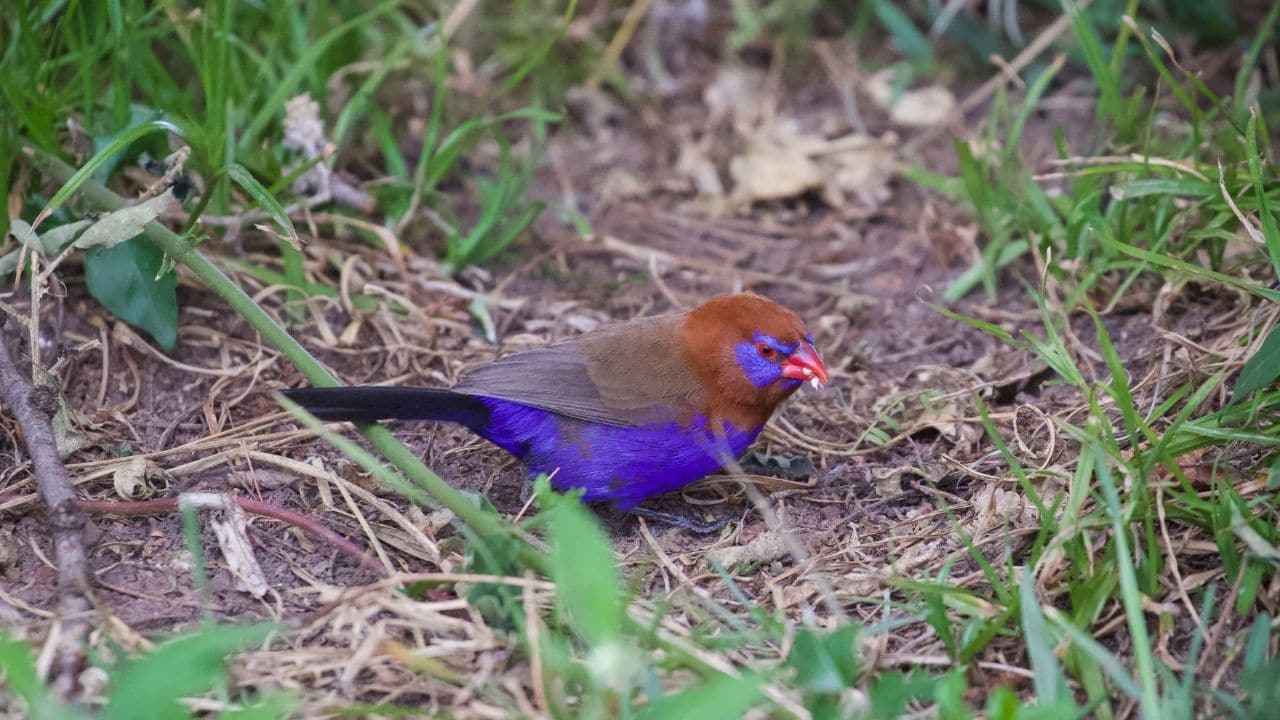
This funny-looking animal has a red-brown head, purple body, black feet, and red beak.
They are commonly found in East Africa and are also a dimorphic species, with females maturing to a light brown, with a white belly and purple tail feathers.
Violet-bellied Hummingbird
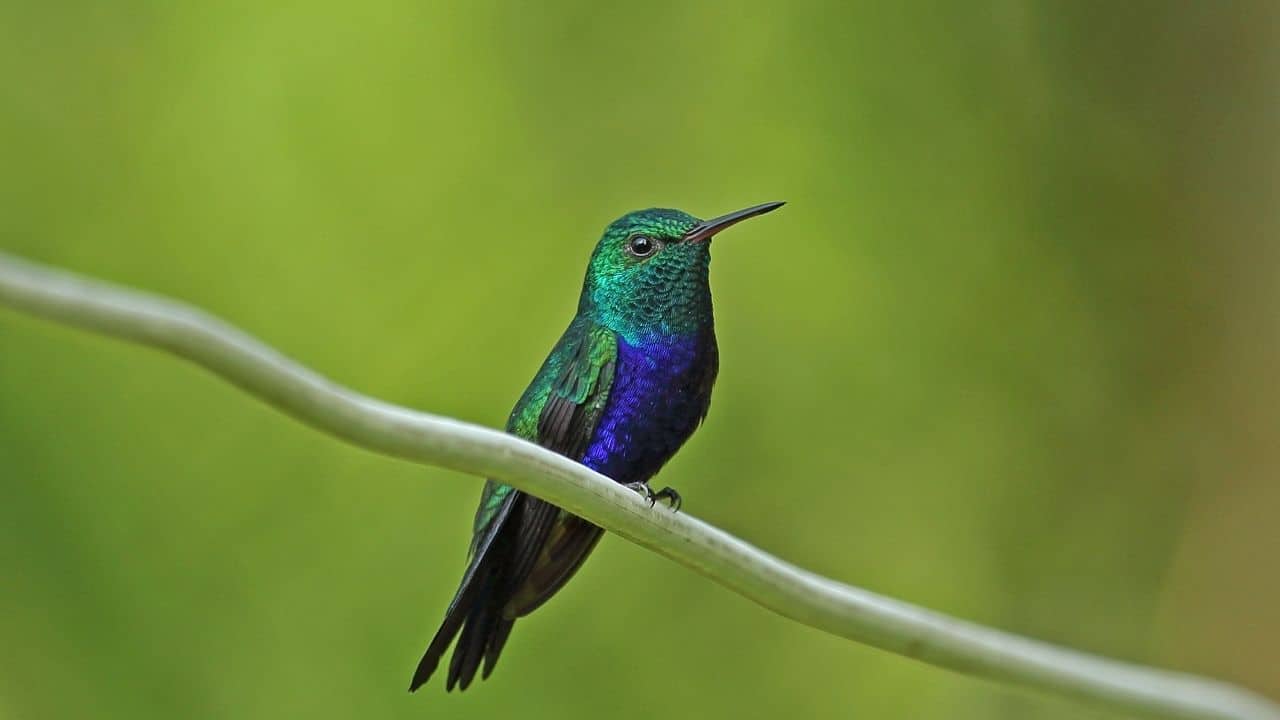
This South American inhabitant can be found cruising through the forests of Columbia, Ecuador, Peru, and Panama.
In contrast to their bright purple undercarriages, they have distinctive green crowns, where females are smaller and duller in hue.
Violet-crowned Woodnymph
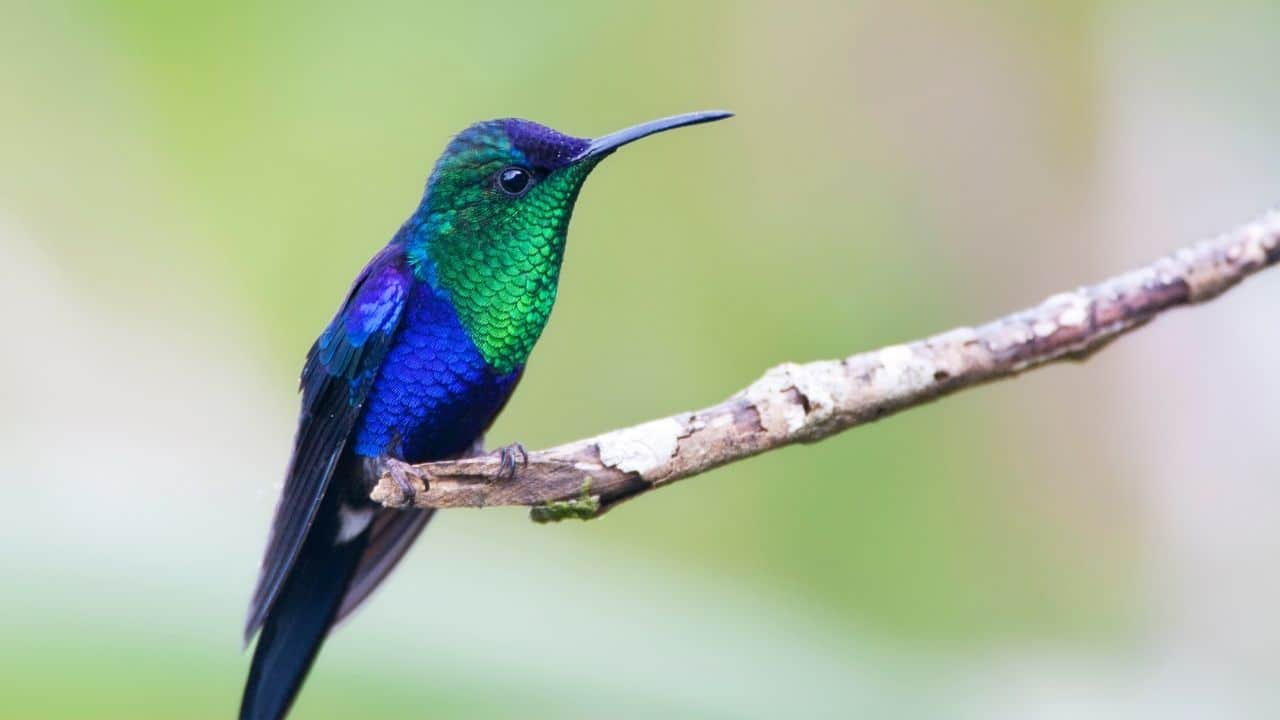
This gorgeous little bird is a perfect split of shiny bright purple and brilliant green and can be found in Central and South America.
While males’ throats, breasts, and lower backs are iridescent greeny-blue, their crowns, shoulders, and bellies are a vibrant violet. Females, conversely, are green all over with grey throats and breasts.
Why Some Birds are Purple
In the bird kingdom, the purpose of color is most often to do with survival. Brightly hued plumage can help birds to attract mates, ward off competitors, or hide from predators.
During courtship, for example, female birds are attracted to the richness and depth of their prospective partner’s plumage.
When it comes to competition for food or territory, flashing their bright colors can be a way to show dominance or irritation to other birds.
And when it comes to predators, I was amazed to learn that color can serve as a protection mechanism. You see, what we view is not always as it seems.
In this case, a purple bird may not actually be bright purple but only appears that way because of the reflection of light.
This exact bright reflection cannot be seen clearly by a purple bird’s natural enemies, effectively protecting it from danger.
Frequently Asked Questions about Purple Bird Breeds
What colors do birds see?
Birds have a far greater vision spectrum than humans. Where we can see the color receptors red, yellow, and blue, our feathered friends can see way beyond this. Birds possess retinal filters that allow them to see a spectrum of colors in the ultraviolet range inaccessible to humans.
Why do we see color in the feathers of birds?
The microscopic make-up of feathers refracts light in such a way that we perceive them as iridescent or brightly hued. Because of how light falls on birds, we see them in various colors, much like how a glass prism reflects in varying shades.
Conclusion
Purple birds are a wonder to behold and a testament to the magic of nature.
While this list is not extensive, it touches on just a few of the beautiful species out there that you may come across if you happen to find yourself in an area they inhabit.

